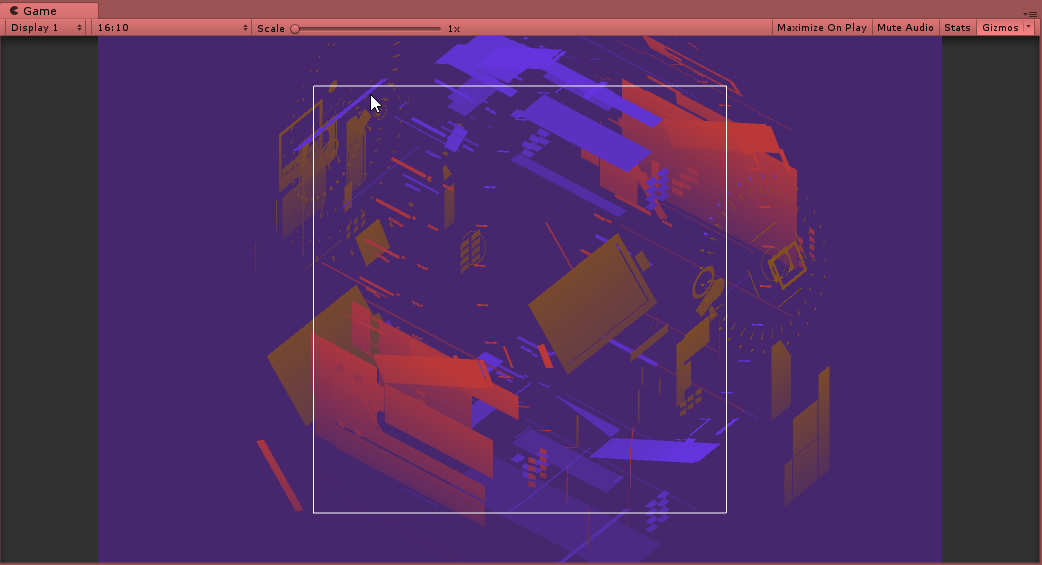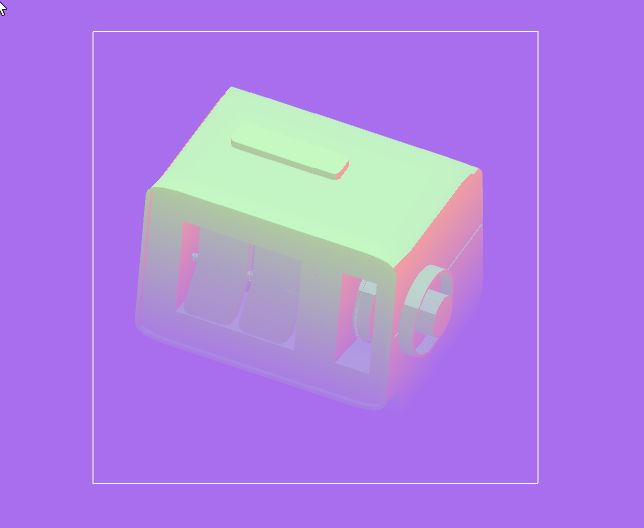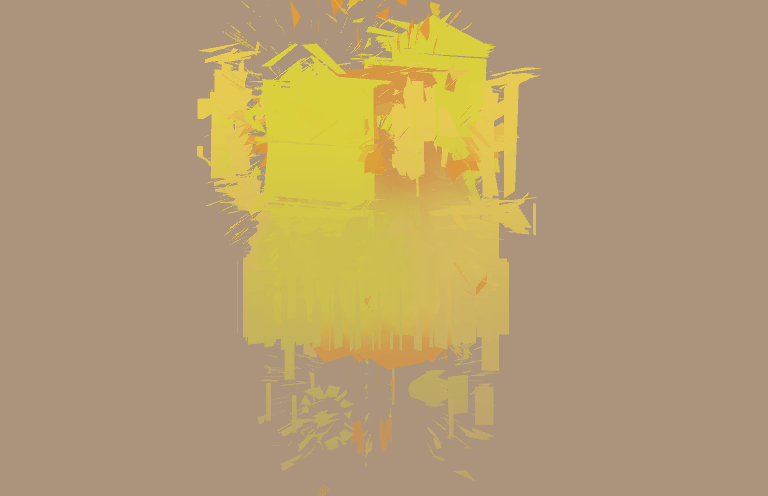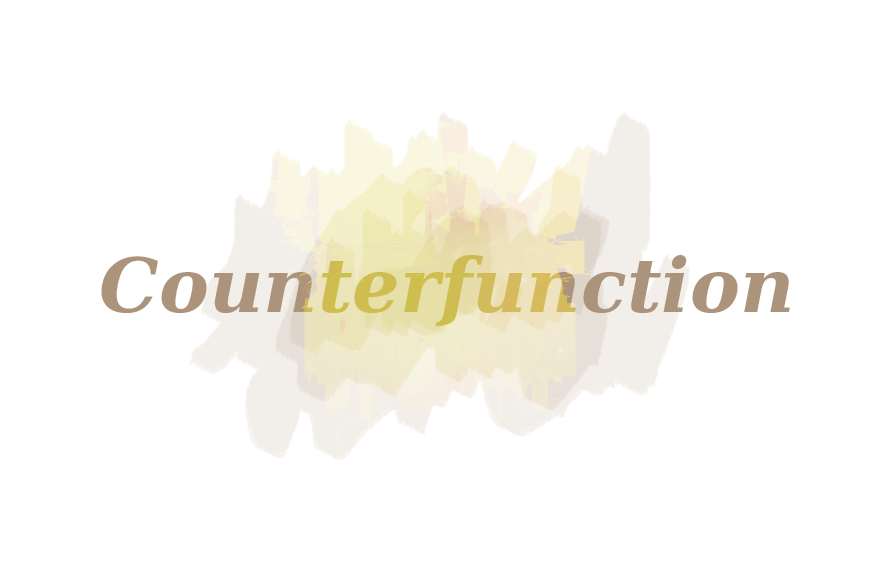Making the counterfunction
This project is from a serie of prototype I built for a directed study with Pippin Barr. A directed study is a one on one class with a teacher, usually for graduate student, around a topic relevant to their thesis work. We worked around fast prototyping. As a pretext for creation, we wanted each prototype to be a response to an academic text.

Counterfunctional Design
Counterfunction is based on Pierce, James, and Eric Paulos. “Counterfunctional Things: Exploring Possibilities in Designing Digital Limitations.”
In this article, Pierce and Paulos define Counterfunctional things as objects whose design go in opposition to their primary function. They use the example of a camera, and design several prototypes showcasing this idea. For example : a Camera with no buttons, that takes picture at random, so you never know if what you pointed your camera at is going to end in a photo. Or a camera you have to break open to get to the memory card and see your pictures. Or again, a camera that signals you when it can take a picture, but as a result, that you can't use whenever you want.
More than being a slightly ironical design approach, counterfunctional design works as a tool for of critical design. By removing what is seen as unnecessary, the designer bring forth what they think is the core of the object they are designing, the specificity a camera needs to posses in order to still be perceived as a camera. Counterfunctional design also brings forth new usages that are enabled by these limitations, and shift our understanding, as users, of what the object being designed is.

Counterfunctional Game
How can this idea be translated from the world of industrial design to the world of game design ? Counterfunctional design is in itself provocative, by challenging what is thought to be core of the design field it is investigating.
Game is always talked about as being an interactive medium. I wanted to question this notion. What does interactive mean ? Are games Interactive or are they interactive in a different fashion than other medium ? How can we remove a maximum of what is perceived as this "direct interaction" while still designing something interactive.
I don't want to delve into the problem of definition : Is the result still a game, is it a toy, a non game, an art game : I don't care. What I am interested in is this notion of interaction with a machine whose processes are unknown to the interactant.
A game you can just open
I identified what I think was the most minimal "direct interaction" you could have with a game : Opening, and closing it. Then, I tried to design with this limitation in mind, a game you could just open.
Even if at first it seems that the design space offered by this sole interaction is minimal, it turns out a lot can be done by "just opening" a game. You can take into account the moment the game was opened (the time of the day, the season, the year, kind of like what is happening in animal crossing). You can factor in how many time the game was opened, how long it was opened in total or the last time it was opened. You can even go deeper and check the weather on the time it was opened or the location it was opened in.
The more I thought about it the more it seems this idea could be very complex : I could design an interactive fiction engine that would show you bits of visual storytelling depending of the time of the day you opened the game. Those tableau would then orient you toward an other time you need to open the game, and remember what you saw and didn't see, building a web of relationship between those story fragment.
But, as I wrote earlier, this was a rapid prototyping class, and doing all this in a week, as it was originally planned, was not realistic. So again, I removed bits and pieces to make it all fit. It took me two more weeks than planned stretched one day at a time over the summer and fall.

Design for Release
A small prototype released is better than a overscoped prototype cancelled.
I chose to design four objects : a dutch clock, a camcorder, a "dream machine" sony alarm clock, and a ramen noodle bowl. I chose these four objects because they can all show time, the ramen bowl using the chopsticks as the hands of a clock (this was supposed to be the "hard" level). Each objects would be shown at a certain hour , and reference another hour where, another object would be shown. Simple enough, but I felt that just showing the object might be confusing for players. They might think it is just a game that show you a camcorder, or a game that show you nothing if you open it at the wrong time. So I worked on a special shader that would make the objects look "exploded", so unreadable, but still allows to show something on screen. The more we approach the correct hour, the more the object mends itself to be recognizable. And once we are past this hour, the object goes back to explode, more and more.
For the art direction, I didn't have the time to work on unwrapping and texturing the objects, but at the same time I thought that a pure" one color" flat object wouldn't quite fit the project. If the interaction is minimal, there should at least be something visually interesting happening on the screen. So I worked on a shader that would color faces depending on their orientation in regard to the global X/Y/Z axis. This means for example, that if a face is oriented toward the global X, it would be red, or toward the global Y, it would be blue. etc .. I then added a fourth gradient color on the vertical axis to add sort of shading to the object, the lower part of the object appearing darker. I was inspired by the project "Fundations" by Thomas Pomarelle.
I had then four colors to choose (one for each axis plus the gradient color). I could have chosen them randomly but radom palettes tend to be mushy and brownish. So I worked on a simple unity tool to edit and save palettes. I think I ended up with around 12 or 13 different palettes, and the game pick one at random when it launches.

What now
Now that this one is online, I still have two other prototype to finish. But I think there is something interesting that can be made with this idea of a game you can only interact with by opening or closing it. The mechanic recall the notion of ritual that was used in games like vesper 5 , only even more limited since you can't even interact one the game is opened. But it also reference concept like "idlescape" first embodied in "station fantome" by pol, which are games where you stand idle, and can just gaze into the scenery.
I hope I will have the opportunity to work on this concept further, in the near future.
Get Counterfunction
Counterfunction
A counterfunctional game essay
| Status | Prototype |
| Category | Other |
| Author | RageKit |
| Tags | artgame, counterfunction, design-art, Experimental, glitch, unconventional, weird |


Leave a comment
Log in with itch.io to leave a comment.